If there are scuffs, deep scratches and other defects on the working surface of the disc that increase pad wear and reduce braking efficiency, as well as in case of increased lateral runout of the disc, causing vibration during braking, replace the disc. In specialized workshops, such a disc can be machined and polished on both sides to the same depth, but after processing, the thickness of the disc must not be less than the minimum allowable (23.2mm).
The minimum allowable thickness of the brake disc of the brake mechanism of the front wheel when worn is 23.0 mm. If the thickness of one of the discs is less than the specified value, replace both discs. When replacing brake discs, be sure to replace the brake pads with a new set.
1. Remove the wheel from the side of the disc being replaced.
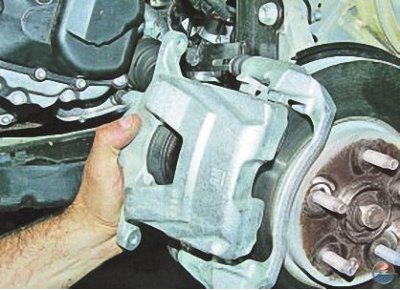
2. Remove the caliper (see Front wheel brake caliper replacement), without disconnecting the brake hose, and secure with wire to the front suspension spring. Do not twist or strain the hose while doing this.
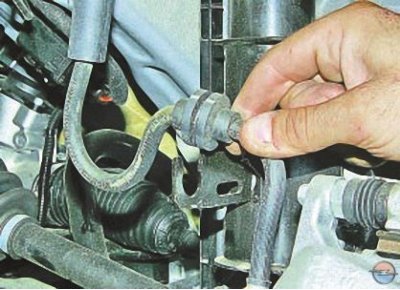
Note. To be able to secure the caliper with wire to the front suspension spring, before removing the caliper, remove the brake hose holder from the slot in the bracket on the shock absorber strut.
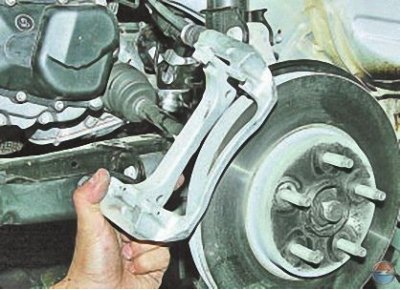
3. Remove the guide from the steering knuckle (see Front wheel brake caliper replacement).
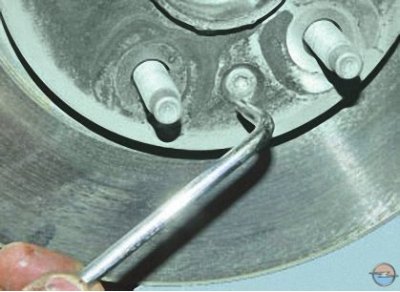
4. Turn out a bolt of fastening of a disk to a nave …
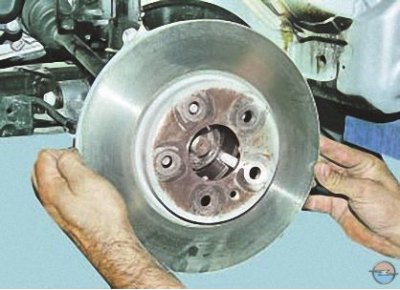
5.... and remove the disc.
6. Similarly remove a brake disk of the brake mechanism of other forward wheel.
7. Install the parts in the reverse order of removal.
Note. Opel Astra J can be fitted with two wheel sizes: 155 and 166 inches. In this regard, some parts of the brake mechanisms installed on different vehicle configurations have different sizes. In particular, the diameters of the brake discs of the brake mechanisms of the front wheels are 276 and 300 mm for installation with wheels of 15 and 16 inches, respectively. Keep this in mind when purchasing new brake discs.
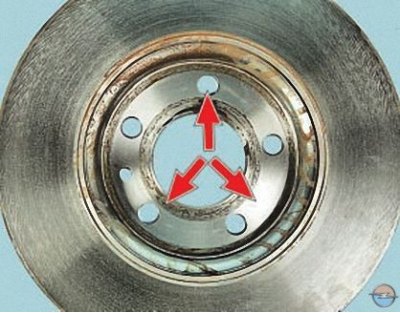
Note. Before installing the disc, carefully clean the mating surfaces of the hub and disc from rust and scale, as even the smallest particle sandwiched between the mating surfaces will cause the disc to beat and vibrate when braking.
Note. If you are installing an old disc, file off the shoulders on the working surfaces of the disc, formed on both sides as a result of disc wear.

Visitor comments